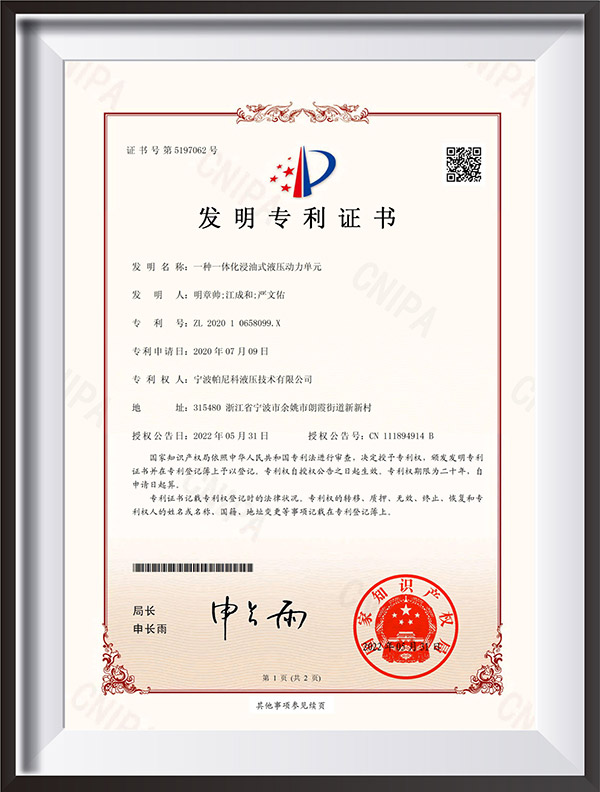In the field of hydraulic technology, boarding axle power unit is a key component widely used in heavy-duty vehicle systems to improve the vehicle's operability and load adaptability. Ningbo Panic takes "innovation, quality, and trust" as its core values, ensures the reliability of hydraulic products through strict quality control processes, and thus promotes technological progress in the entire industry.
Question 1: What is the basic definition of boarding axle power unit?
Boarding axle power unit is an integrated hydraulic system designed for the vehicle's liftable axle. It drives the lifting and lowering of the axle through hydraulic force, allowing the vehicle to lift the axle when it is unloaded or partially loaded to reduce tire wear and fuel consumption.
The system usually includes a hydraulic pump, a control valve, and an actuator (such as a hydraulic cylinder) to form a compact power unit.
In application, it is often used in semi-trailers, trucks, or special engineering vehicles to optimize load distribution and driving stability.
Combined with Ningbo Panic's professional manufacturing, this type of unit emphasizes the matching of high-precision components to ensure consistency and response speed of action under extreme working conditions.
Question 2: What hydraulic technical elements are involved in the working principle of the boarding axle power unit?
The core of the boarding axle power unit is to use hydraulic fluid to transfer energy and realize mechanical motion conversion. This process relies on multiple key technical links.
As a power source, the hydraulic pump converts mechanical energy into fluid pressure energy and drives the fluid to the control valve and actuator.
The control valve (such as a directional valve or a pressure valve) regulates the flow direction and pressure of the fluid to ensure the smoothness and controllability of the axle lifting and lowering.
The actuator (usually a linear hydraulic cylinder) converts fluid pressure into linear motion and directly acts on the axle mechanism.
Ningbo Panic's innovative practices focus on optimizing the efficiency of these components, such as reducing internal leakage through precision casting and material selection, thereby improving the overall energy efficiency of the unit. The company's strict quality control ensures that each hydraulic circuit is reliably sealed in a high-pressure environment, avoiding the risk of failure.
Question 3: What are the key advantages and typical application scenarios of the boarding axle power unit in vehicle systems?
The advantages of this unit come from the flexibility and reliability of its hydraulic system, which plays a key role in improving vehicle performance.
Key benefits include optimized fuel efficiency (by reducing unnecessary rolling resistance), enhanced vehicle stability (dynamically adjusting axle loads when turning or on uneven roads), and extended tire life (reduced ground contact area).
Typical application scenarios include semi-trailer management in logistics transportation, adjustable axle configurations for construction engineering vehicles, and rapid adaptation needs for emergency rescue equipment.
Ningbo Panic's trust concept is reflected in the design of these units, and the company is customer-oriented and provides customized solutions. For example, technological innovation ensures the weather resistance of the unit in severe cold or high temperature environments, avoiding common failure points such as response delays caused by changes in hydraulic oil viscosity.
Question 4: How does Ningbo Panic Hydraulic Technology Co., Ltd. ensure the long-term reliability of the boarding axle power unit through its core values?
Ningbo Panic's professionalism runs through the entire manufacturing process, and unit performance is guaranteed through strict quality control and technological innovation.
Innovation-driven is reflected in the R&D stage, and the company continues to introduce advanced simulation technology and material science to optimize the impact resistance and service life of the unit.
Quality assurance comes from precision testing throughout the manufacturing system, including pressure cycle verification and fatigue testing, to ensure that each unit meets zero-defect standards before leaving the factory.
Trust is built through open cooperation. The company shares data with global partners to improve product compatibility and maintainability, ultimately making the boarding axle power unit an industry benchmark. This practice of integrating hydraulic technology not only strengthens the stability of the unit in critical applications, but also promotes the standardized development of the entire hydraulic industry.


 English
English 中文简体
中文简体 русский
русский
























